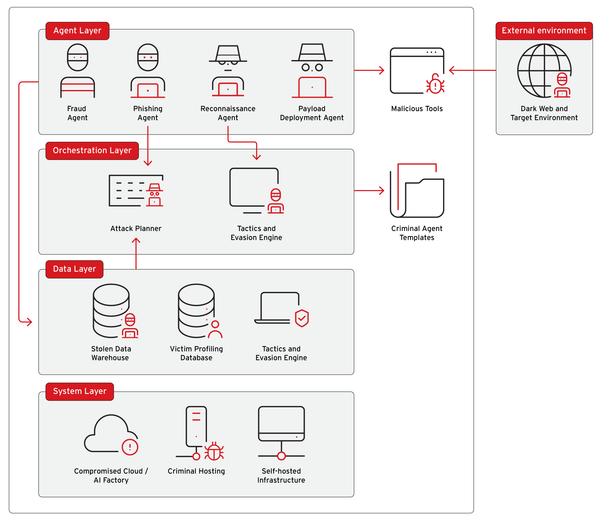Mexico Scams 2025: Where Drug Cartels Meet Cybercrime in a Perfect Storm of Digital Deception

Executive Summary
Mexico faces an unprecedented convergence of traditional organized crime and sophisticated cyber fraud that has created one of the most dangerous digital threat environments in the Western Hemisphere. In 2024 alone, Mexico lost MX$11.3 billion (US$611 million) to cyber fraud, with the country accounting for 55% of all cyberattacks in Latin America. What makes Mexico's crisis unique—and particularly alarming—is the direct involvement of drug trafficking organizations (DTOs) like the Jalisco New Generation Cartel (CJNG) and Sinaloa Cartel in cybercrime operations, using artificial intelligence, deepfakes, and cryptocurrency to expand their criminal empires beyond traditional drug trafficking. With cyberattacks against government institutions projected to increase by 250% from 2024 to 2025, and 59% of Mexicans encountering at least one scam per month, the nation stands at a critical juncture where inadequate cybersecurity infrastructure, dissolving data protection oversight, and cartel innovation have combined to create a fraud crisis that threatens both national security and economic stability.
The Numbers: A Nation Under Digital Siege
Mexico's cyber fraud landscape reveals a crisis of staggering proportions that extends far beyond typical financial crime:
Financial Devastation
- MX$11.3 billion (US$611 million) lost to digital fraud in 2024
- 72% of successful fraud attempts executed through social engineering
- 77% increase in identity theft losses compared to previous year
- Only 1.4% of losses reimbursed to victims by financial institutions
- Only 6% of victims able to recover all money lost to scams
Attack Volume and Frequency
- 55% of all Latin American cyberattacks targeted Mexico in 2024
- 59% of Mexicans encounter at least one scam per month
- 25% of nationwide cyberattack attempts concentrated in Nuevo León State (2022-2024)
- Projected 250% increase in attacks against government institutions from 2024 to 2025
- Over USD $40 million in economic losses from ransomware, phishing, and extortion attacks in 2024
Psychological and Social Impact
- 58% of respondents reported strong or very strong emotional impact from fraud
- Thousands of victims displaced by virtual kidnapping schemes
- Widespread fear and distrust eroding social fabric
- Business extortion creating climate of terror in affected regions
The Cartel Connection: When Organized Crime Goes Digital
What separates Mexico's fraud crisis from other nations is the unprecedented involvement of drug trafficking organizations in cybercrime—a fusion that has created new and terrifying fraud methodologies.
DTOs Embrace Technology
The Jalisco New Generation Cartel (CJNG) and Sinaloa Cartel have systematically integrated advanced technologies into their operations:
Artificial Intelligence Applications:
- Creation of deepfake videos impersonating legitimate businesses and law firms
- AI-generated voice cloning for virtual kidnapping schemes
- Automated targeting systems for identifying high-value victims
- Machine learning algorithms to evade detection
Cryptocurrency Operations:
- Money laundering through digital currencies
- Ransomware payments in Bitcoin and other cryptocurrencies
- Cross-border fund transfers without traditional banking detection
- Creation of untraceable financial networks
The Deepfake Threat
Criminal organizations use deepfake technology to impersonate:
- Company executives authorizing fraudulent wire transfers
- Law enforcement officials conducting "digital arrests"
- Legitimate businesses in investment scams
- Family members in virtual kidnapping schemes
The sophistication level has reached a point where victims cannot distinguish real communications from fake ones, even during video calls.
Military and Government Targets
In April 2025, military officials revealed they were investigating an elaborate network of hackers connected to CJNG that attempted to breach:
- Multiple national security agencies
- PEMEX (state-owned oil company)
- Critical infrastructure systems
- Government data repositories
This represents an evolution from profit-driven crime to strategic attacks that threaten national security.
Virtual Kidnapping: Terror for Profit
One of Mexico's most psychologically devastating scam types emerged from prison cells and has evolved into a sophisticated multi-million dollar operation.
The Mechanics
Virtual kidnapping scams create the illusion that a loved one has been kidnapped when no actual abduction has occurred. The scheme relies on:
- Initial Contact: Criminals call victims claiming to have kidnapped a family member
- Audio "Proof": Accomplices scream or plead in the background
- Urgency and Threats: Demands for immediate ransom payment with threats of violence
- Isolation: Keeping victims on the phone to prevent verification
- Payment: Wire transfers, cryptocurrency, or in-person cash delivery
Evolution of the Threat
Prison Operations (2013-2015): Between 2013 and 2015, investigators tracked virtual kidnapping calls from Mexico—almost all originated from within Mexican prisons using smuggled cellphones. Notably, Julio Manuel Reyes Zuniga operated a virtual kidnapping ring from Santa Martha Acatitla Prison in Mexico City while serving a murder sentence, victimizing at least 30 Americans.
Cross-Border Targeting (2019-Present): A concerning new twist emerged where criminals call rooms at U.S. hotels near the border, claiming the hotel is surrounded by armed enforcers. Victims are convinced to:
- Leave their hotel and drive across the border into Mexico
- Check into a Mexico-based hotel
- Video-call the scammers who take screenshots
- Remain isolated while families are extorted for ransom
Modern Sophistication: Today's virtual kidnapping schemes incorporate:
- Stolen social media information to make threats more credible
- AI-cloned voices of actual family members
- Real-time location tracking through phone exploitation
- Multi-day isolation tactics with hotel changes
- Sophisticated psychological manipulation techniques
Real Victim Stories
Jose Ramirez Case (Cancun): A retired New York police officer and triathlete was targeted after completing an Ironman competition. Criminals knew his name and hotel information, threatened him with drug planting or death, and forced him to change hotels, buy a new phone, and withdraw bank funds over a three-day ordeal before Mexican police recovered him unharmed.
Medical Professional Targeting: The FBI documented virtual kidnappers cold-calling hundreds of numbers in Texas—specifically targeting American physicians, banking that some would have family connections in Mexico. In one case, criminals claimed they had kidnapped a young woman, threatened to cut off her fingers, and had a female accomplice scream in the background for effect.
Financial and Emotional Toll
- Average ransom payments: Several thousand dollars per incident
- Success rate: High enough that operations continue despite law enforcement efforts
- Psychological impact: Victims report PTSD symptoms, anxiety, and lasting trauma
- Underreporting: FBI estimates many incidents never reach law enforcement due to fear or embarrassment
Social Engineering: The 72% Problem
A staggering 72% of successful fraud attempts in Mexico are executed through psychological manipulation of users, according to Facephi's Fraud Intelligence Report 2025. This reveals a fundamental shift in how cybercriminals operate.
Why Social Engineering Dominates
The Human Vulnerability Factor: Traditional security measures focus on technological defenses—firewalls, encryption, multi-factor authentication. But when 72% of fraud succeeds through human manipulation, these defenses become irrelevant. Criminals have recognized that it's easier to trick a person than to hack a system.
Multi-Channel Sophistication: Modern social engineering attacks use coordinated approaches across multiple platforms:
- Voice Calls: Cloned voices using AI from just 3 seconds of audio
- WhatsApp Messages: Fake communications from "banks" or "contacts"
- Social Media: Fake profiles on platforms like TikTok, Facebook, and LinkedIn
- Email: Phishing campaigns with perfect grammar and official-looking templates
- Video Calls: Deepfake video impersonating executives or officials
Platform-Specific Targeting
Criminals segment victims by demographics and tailor attacks to each platform:
TikTok → Young People:
- Investment opportunities in cryptocurrency
- Fake job offers with high pay
- "Get rich quick" schemes
- Gaming and NFT scams
Facebook → Adults:
- Business opportunity scams
- Romance and dating fraud
- Fake marketplace listings
- Family emergency scams
WhatsApp → All Demographics:
- Bank security alerts
- Package delivery notifications
- "Wrong number" friendship scams leading to investment fraud
- Group chat invitation scams
LinkedIn → Professionals:
- Fake recruitment opportunities
- Business partnership proposals
- Executive impersonation
- Professional networking fraud
The "Pig Butchering" Phenomenon
One particularly insidious social engineering scam involves:
- Initial Contact: "Wrong number" text or social media friend request
- Relationship Building: Weeks or months of friendly conversation
- Trust Development: Sharing personal stories, creating emotional connection
- Investment Introduction: Casually mentioning successful cryptocurrency investments
- Platform Recommendation: Directing victim to controlled fake trading platform
- Small Success: Allowing victim to withdraw small profits to build trust
- Large Investment: Encouraging victim to invest significant amounts
- The Slaughter: When victim tries to withdraw large sums, platform "glitches" or demands taxes/fees
- Complete Loss: Scammer disappears with all invested funds
Digital Arrest Scams: The New Terror Tactic
A disturbing evolution in fraud methodology, digital arrest scams have become increasingly prevalent across Mexico and globally.





